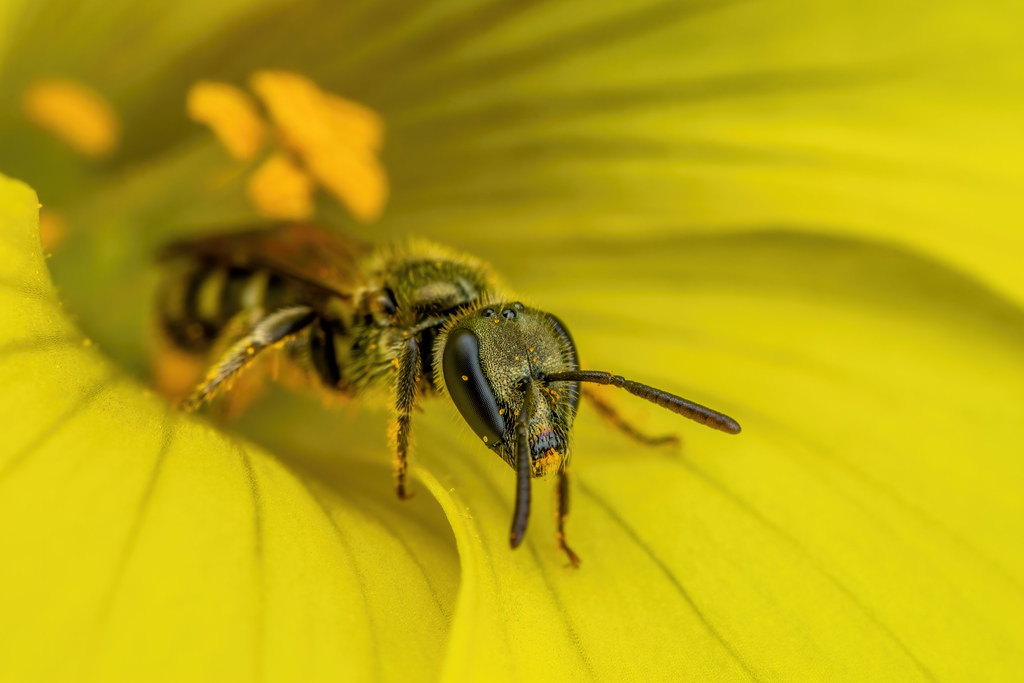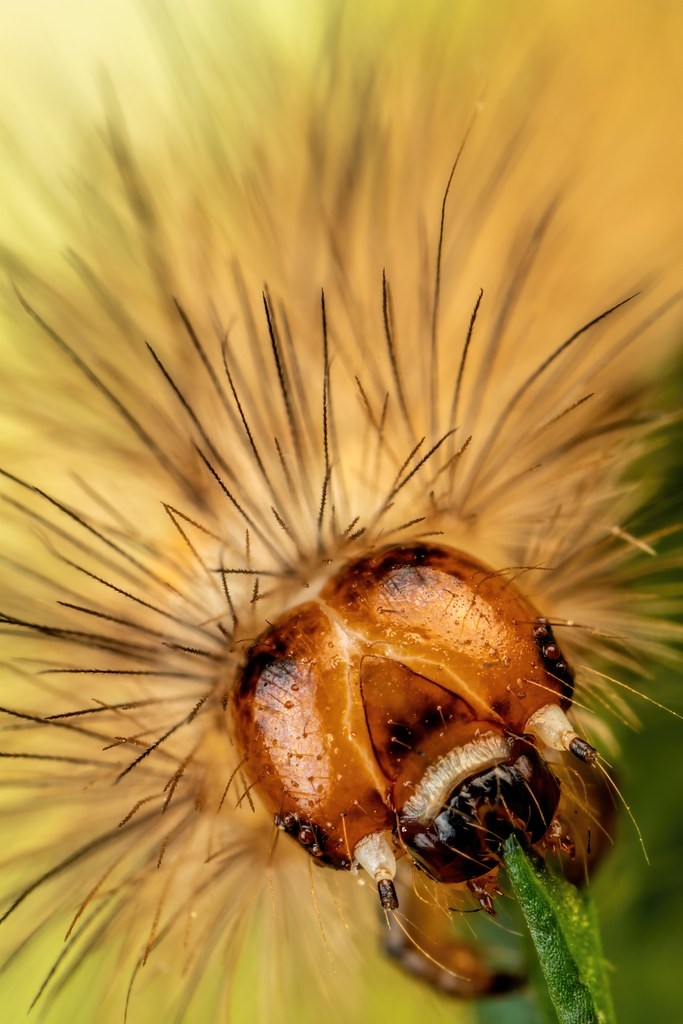There are two challenges to photographing them when they are hyperactive. The first is being able to grab onto the flower they are foraging in undetected. It's easier to do on windy days cause the vibration that I induce when I grab onto the flower's stem is masked by the breeze. In this video I describe the technique and end up spooking the subject because there wasn't enough wind.
The second challenge is to compose the scene and get the area of acceptable focus where it needs to be. I don't focus stack, and it really doesn't matter cause it's not possible to focus stack a subject that's in motion anyway. They can take up to a minute or two to go through all the anthers in a flower, but it's only the anthers at the top that allows for a good view of the bee. So once she comes to the top of the flower I only have a few seconds, and even then there won't be many opportunities to catch her looking at the camera. If I can work out the lighting it would be an easier scene to shoot a video of than to take stills.
Tech Specs: Canon 80D (F11, 1/250, ISO 100) + a Canon MP-E 65mm macro lens (around 2.5x to 3x) + a diffused MT-26EX-RT with a Kaiser adjustable flash shoe on the "A" head (the key), E-TTL metering, -1/3 FEC). These are single, uncropped, frames taken hand held. In post I used Topaz Sharpen AI, Denoise AI, and Clarity in that order.
 Sweat Bee Foraging in a Sourgrass Flower II by John Kimbler, on Flickr
Sweat Bee Foraging in a Sourgrass Flower II by John Kimbler, on Flickr Sweat Bee Foraging in a Sourgrass Flower by John Kimbler, on Flickr
Sweat Bee Foraging in a Sourgrass Flower by John Kimbler, on Flickr Sweat Bee Foraging in a Sourgrass Flower III by John Kimbler, on Flickr
Sweat Bee Foraging in a Sourgrass Flower III by John Kimbler, on FlickrI usually end up with more images like this next one, cause the critter noticed me when I grabbed onto the flower's stem. Sometimes they'll pause at the edge for a fer seconds before doing their normal pre-flight cleaning and take off. Very common for the bee to be facing away from me, but since I've got the stem of the flower between my index finger and thumb I just gently rotate it until I get the subject where I want it in the frame.
 Sweat Bee in a Sourgrass Flower by John Kimbler, on Flickr
Sweat Bee in a Sourgrass Flower by John Kimbler, on Flickr
